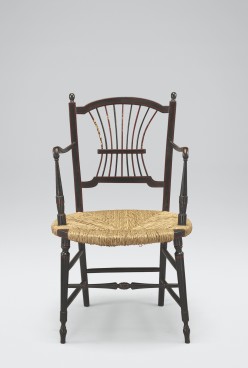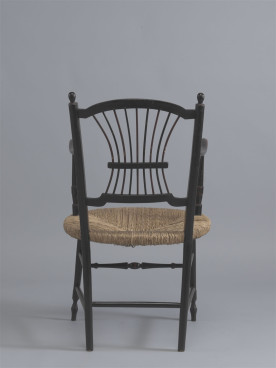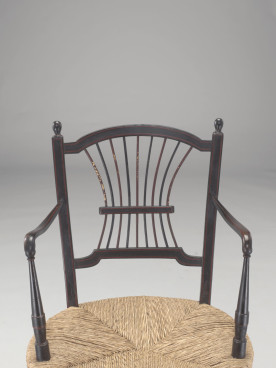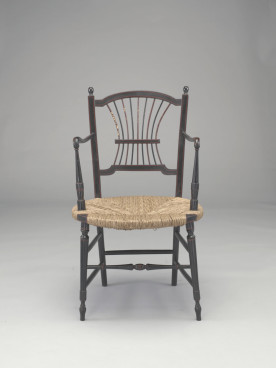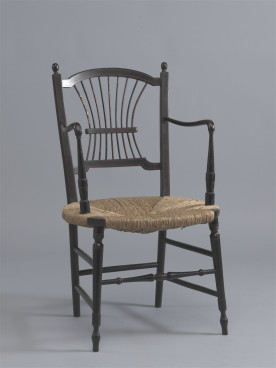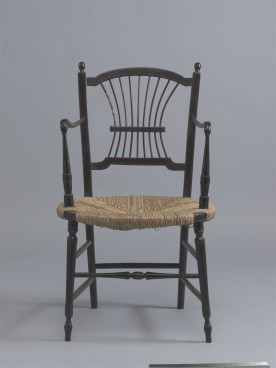Armchair, designed c.1863
Beech with red painted decoration and rush
The design is attributed to Dante Gabriel Rossetti. The chair was made by Morris & Co., London, and marketed as the Rossetti Arm-Chair.
Adam Bowett Catalogue 14/08/2012
Description
An armchair, japanned black and red, c.1865. The slightly arched back has a ‘splat’ composed of nine very narrow splayed and bent spindles tied across the middle and set between finialled uprights. The splayed arms are set on slender turned and splayed supports, over a rounded seat, raised on turned and tapered legs with spool feet, joined by a turned front stretcher, paired side stretchers and a single back stretcher.
Dimensions
H: 34 ¾ ” (88cm) Seat height: 16 ½ ” (42cm) W: 19 ¾ ” (50cm) D: 20“ (51cm)
Designer/Maker
The design is traditionally ascribed to Gabriel Dante Rossetti, for the Morris, Marshall, Faulkner & Co. ‘Sussex’ range
Materials
Beech, wicker, rush
Dating Criteria
This chair was reputedly designed by Dante Gabriel Rosetti and sold by Morris, Marshall, Faulkner & Co from about 1862.
Construction
The upper and lower cross rails are tenoned into the rear posts, the wicker (?) rods are dowelled into the top and bottom cross-rails and through the middle tie rail. The arms are dowelled into the front faces of the back posts and onto the tops of the arm supports. The supports themselves are dowelled into the side seat rails. The seat is constructed in four sections, each of segmental form, having a curved outer and straight inner face. The back and side rails are probably tenoned into the rear posts, and the side rails appear to be tenoned into the ends of the front rail which form curved triangular blocks. The front legs are dowelled up into the same blocks and the stretchers are dowelled all round.
Condition
The extent to which the visible surfaces are original is unclear. The chair has seen plenty of use and there are obvious repairs and areas of retouching. However, certain areas, particularly the back (both the front and back face) and the backs of the legs have a heavy craquelure which suggests a later varnish laid over a substantially original surface. There have been breaks to the left arm where it meets the back posts. Breaks to both arms where they meet the front post. Splits to the corner blocks at the tops of both legs. Repairs to both arms where they meet the seat rails. Rush seat is replaced.
References
Linda Parry (ed.), William Morris, London (1996), p. 176, fig. J24.
Provenance
Purchased form Haslem and Whiteway February 2008

